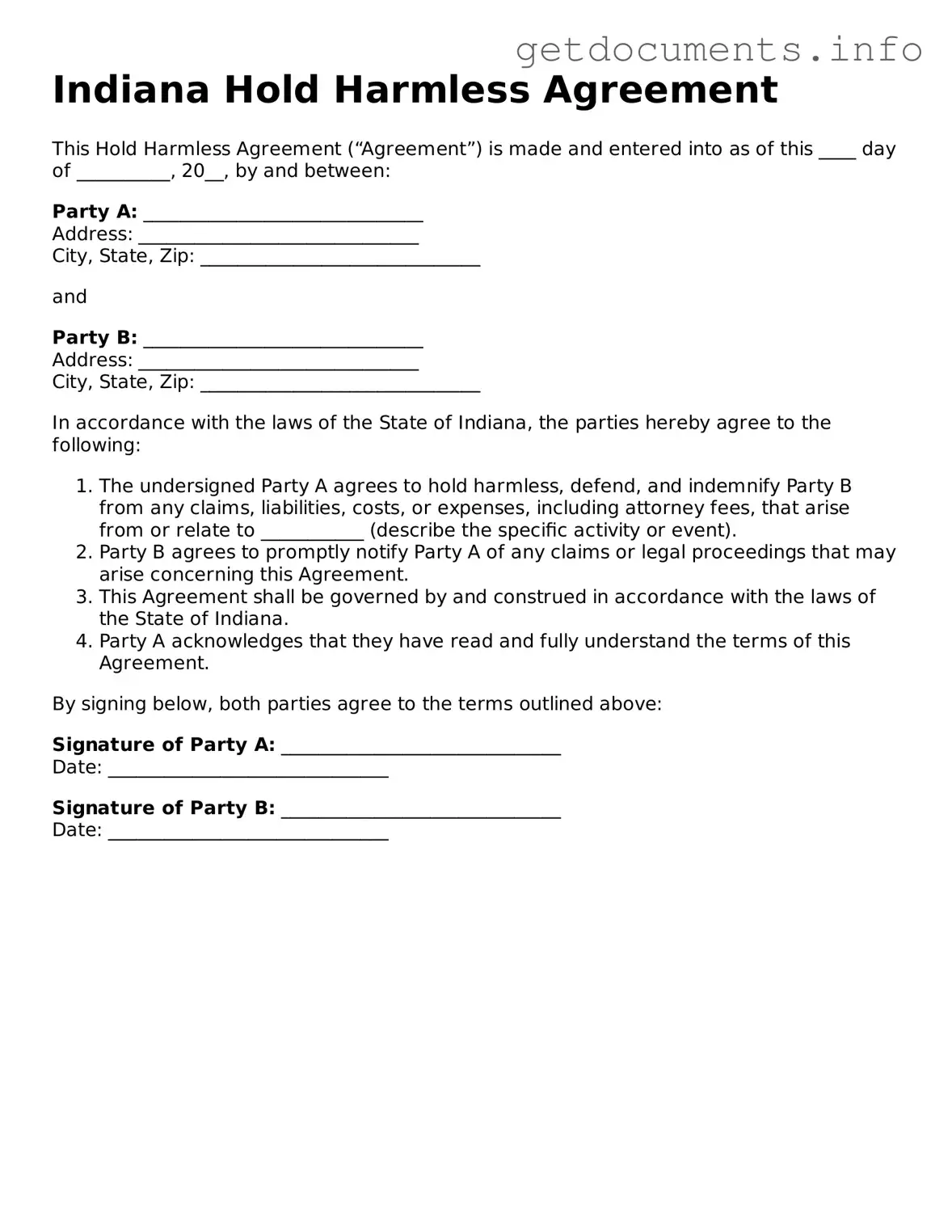The Indiana Hold Harmless Agreement form serves as a vital legal document designed to protect one party from liability for certain risks associated with an activity or event. This agreement is often utilized in various contexts, including rental agreements, event planning, and construction projects. By signing this form, one party agrees to assume responsibility for any potential damages or injuries that may arise, thereby shielding the other party from legal claims. It is essential for individuals and businesses to understand the implications of this agreement, as it outlines the responsibilities and liabilities of each party involved. The form typically includes key elements such as the names of the parties, a detailed description of the activity, and specific terms regarding liability. Additionally, it may require signatures and dates to ensure that all parties acknowledge and accept the terms outlined within the document. Understanding these components can help individuals make informed decisions when entering into agreements that involve risk.
